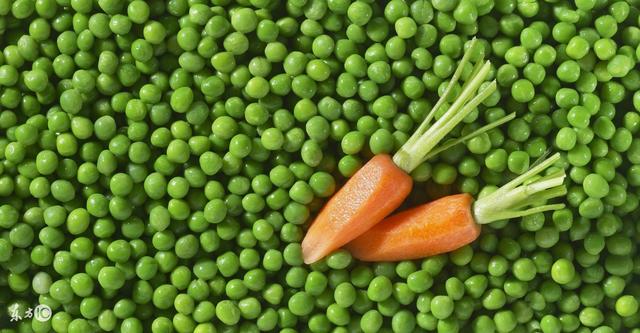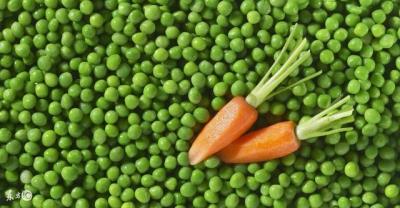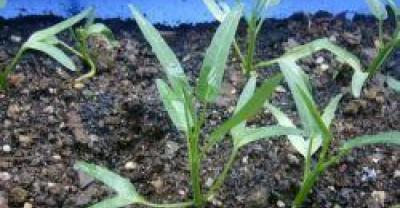Planting techniques for high quality and high yield of pea
Pea is a land-growing crop and an important raw material for food processing. With the increase of demand for pea processing by Gansu Yinhe Group, it will drive the construction of local organic pea production base. In recent years, Minle County has 1000 mu pea production base through the identification of organic agricultural products origin, 30,000 mu pea production base through the identification of green food origin, further promoting the production of high-quality peas. At the same time, the yield of pea increased continuously through the introduction and popularization of new pea varieties, with an average yield of 398-440 kg per mu, which was 24.6%-32% higher than that of local old varieties. Therefore, the popularization of pea planting is of great significance to increase farmers 'income, adjust planting structure and realize sustainable agricultural development.
I. Rotation
Continuous cropping of pea is forbidden because its roots can secrete organic acids, increase soil acidity and affect the development of rhizobia in the next year. At the same time, continuous cropping will aggravate pea root rot, slow growth, short stature, few pods and serious yield reduction. Therefore, plots that have not been planted with peas and other leguminous crops for 3-5 years should be selected for planting, and it is best to select crops such as wheat, barley, rape and corn for rotation.
II. Soil preparation and fertilization
Pea root group is small, proper deep ploughing and fine harrowing, loose soil, can promote neat emergence, strong seedlings, good root development, stress resistance enhancement. Flat plots with medium soil fertility should be selected for planting. After harvest, the previous crop shall be ploughed and cleaned in time, the soil shall be cured, the winter water shall be irrigated, and the harrow shall be made before freezing. Early spring suppression and moisture preservation, combined with cultivated land, 1000- 2000kg of high-quality farm manure, 7.5- 10kg of urea, 20- 30kg of calcium superphosphate, 5- 8kg of potassium sulfate, or 50kg of 45% nitrogen, phosphorus and potassium compound fertilizer (14-15-16) are applied at one time.
III. Preparation for sowing
1. Select fine varieties
High quality and high yield coniferous peas should be selected, such as Grassland 276, MZ-1, Longwan 1, etc.
2. Selected seeds
Before sowing, seeds should be carefully selected, impurities and seeds with insect damage, thin grains and incomplete seeds should be removed, and seeds should be dried for 2-3 days before sowing to improve seed germination potential and germination rate.
3. seed dressing
Seed dressing with 50% carbendazim WP or 60% trimethoprim WP with 0.3% seed weight can effectively control pea root rot.
IV. Early sowing in due time
In early spring, the local temperature reaches 2-5℃, and the soil can be sown after thawing to a suitable sowing depth. Early sowing in time is beneficial to the germination of seeds and seedlings through the vernalization process at lower temperature, conducive to pea absorption of early spring soil moisture, to achieve early maturity, high yield. Minle County is generally sown in late March to early April.
5. Reasonable close planting
7-row or 9-row seeder is used for drilling, with about 30 kg per mu, about 100,000 seedlings per mu, and the general sowing depth is 4-7 cm (4-5 cm when moisture content is good, 6-7 cm when moisture content is poor). Sowing should be uniform and the depth consistent.
VI. Field management
1. intertilled weeding
Pea seedlings grow slowly, weeds grow rapidly, easy to cause grass shortage. Therefore, before the tendrils of pea leaves intertwine with each other, intertillage and weeding should be carried out 2-3 times to thoroughly remove weeds, so as to loosen the soil, improve the ground temperature and promote the development of pea roots. When weeds are serious in late stage, large weeds should be uprooted in time, which not only promotes pea yield but also reduces grass damage of subsequent crops.
2. irrigation and topdressing
In the budding stage, the first round of irrigation is required, and urea 5-7 kg is applied to weak seedlings in combination with irrigation to promote rooting and sprouting. The second round of irrigation is carried out in full bloom and pod setting stage, and compound fertilizer 15-20 kg is applied to each mu in combination with irrigation to increase flowers and protect pods. The nitrogen fertilizer applied in this stage should not be too much or too late, so as to avoid excessive growth of stems and leaves and incomplete pods.
3. pest control
Pea often occurs rust, anthracnose, powdery mildew, brown spot disease, leaf miner, aphid and cabbage caterpillar and other diseases and insect pests during its growth period. After the disease occurs, the diseased leaves should be removed in time, the diseased plants should be pulled out, and the plants should be burned or buried deeply. Rust and powdery mildew can be controlled by 25% triadimefon 2000-3000 times or 70% thiophanate-methyl 800 times; anthracnose and brown spot can be controlled by 50% carbendazim or 75% chlorothalonil 700 times; leaf miner, aphid and cabbage pest can be controlled by 10% imidacloprid 1000 times or 80% dichlorvos 1000 times once a week.
VII. Harvesting and grinding
Peas should be harvested at the right time, too late lower pods are easy to burst, too early upper pods mature badly green pods. Generally, when most of the stems and leaves of the plants are yellow, 70%-80% of the pods are yellow, and the seeds become hard, they can be harvested. After manual harvesting, they should be transported to the field in time for turning and grinding, fully drying after threshing, and selling or storing after drying.

- Prev

Planting and management of citrus fruit during ripening period!
After October, Shatang tangerine began to enter the fruit coloring and ripening period, and the appearance and sweetness of the fruit mainly depended on this period of time.
- Next

Cost and benefit analysis of okra planting!
It is a professional agricultural technology comprehensive service platform specially for fruit and vegetable planting base, agricultural cooperative, sightseeing garden planting, farmers, agricultural material dealers and so on. Okra.
Related
- Fuxing push coffee new agricultural production and marketing class: lack of small-scale processing plants
- Jujube rice field leisure farm deep ploughing Yilan for five years to create a space for organic food and play
- Nongyu Farm-A trial of organic papaya for brave women with advanced technology
- Four points for attention in the prevention and control of diseases and insect pests of edible fungi
- How to add nutrient solution to Edible Fungi
- Is there any good way to control edible fungus mites?
- Open Inoculation Technology of Edible Fungi
- Is there any clever way to use fertilizer for edible fungus in winter?
- What agents are used to kill the pathogens of edible fungi in the mushroom shed?
- Rapid drying of Edible Fungi

